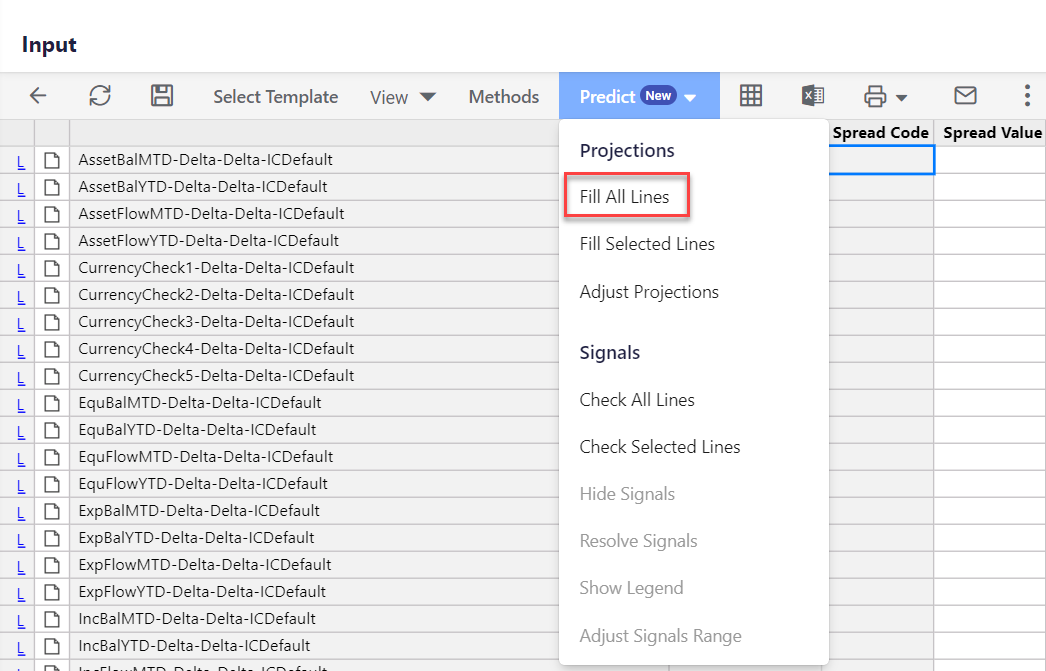- 5 Minutes to read
- Print
- DarkLight
- PDF
24.2 Release Notes
- 5 Minutes to read
- Print
- DarkLight
- PDF
Structured Planning: New Dynamic Report Chart in Dashboards
Introducing the new Dynamic Report Chart type in dashboards to easily create charts using dynamic reports and leverage its supported functionality.
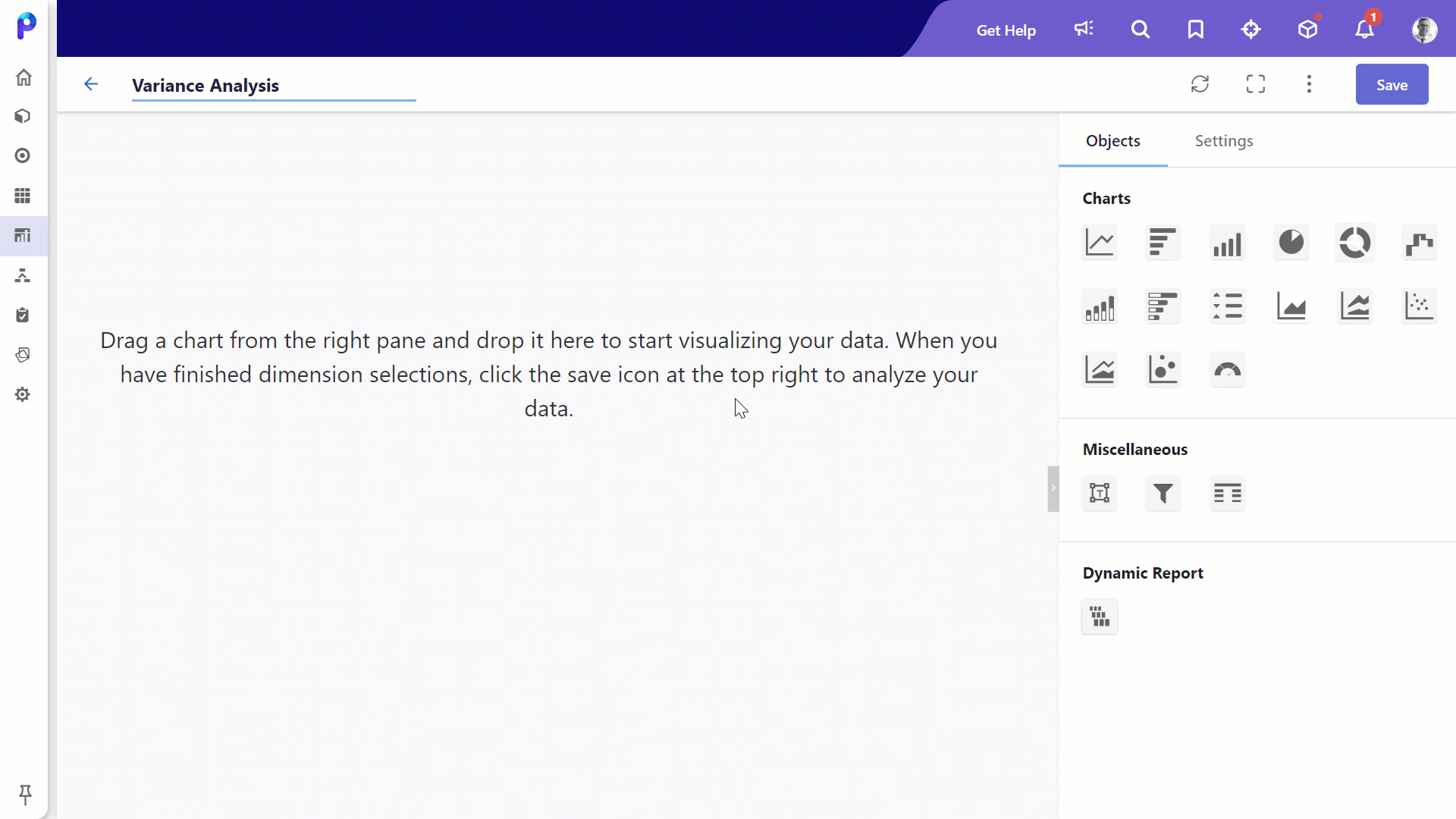
Read More...
With this release, we are introducing the dynamic report chart in Dashboards that allows you to add table charts using Dynamic Reports. You can now leverage the dynamic report functionalities while inheriting the data and formatting from the dynamic report.
You can build the dynamic report with the required data and formatting, and then use it to add a chart to the required dashboards. This includes editing the chart titles and sub-titles similar to other chart types. The dynamic report chart replicates the source Dynamic Report, keeping the formatting, such as text, data, and inserted formula rows/columns. Learn more about cell-level formatting in dynamic reports here.
The Source report page dimension filters are honored in the order of global/dashboard level, chart level, and report level. If Point of View is applied to a report, it takes precedence over the report level. Additionally, you can drill down, drill through to view source data, view signals if available, and collaborate with other users through comments.
In practice: To add the dynamic report chart to your dashboard:
- Navigate to the Dashboard and click on the Add button. If you wish to add to an existing dashboard, search for the desired dashboard and click Edit.
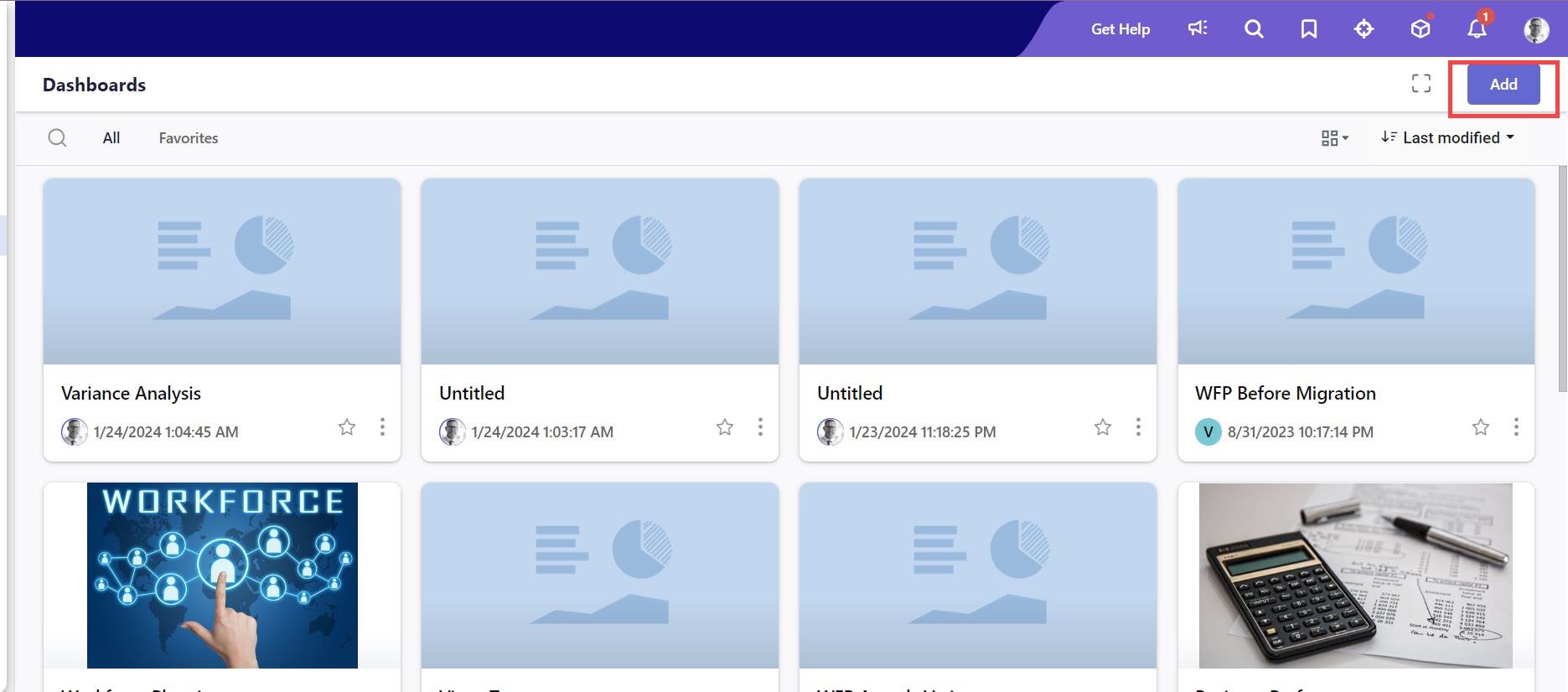
- Locate the new Dynamic Report section in the Objects menu.
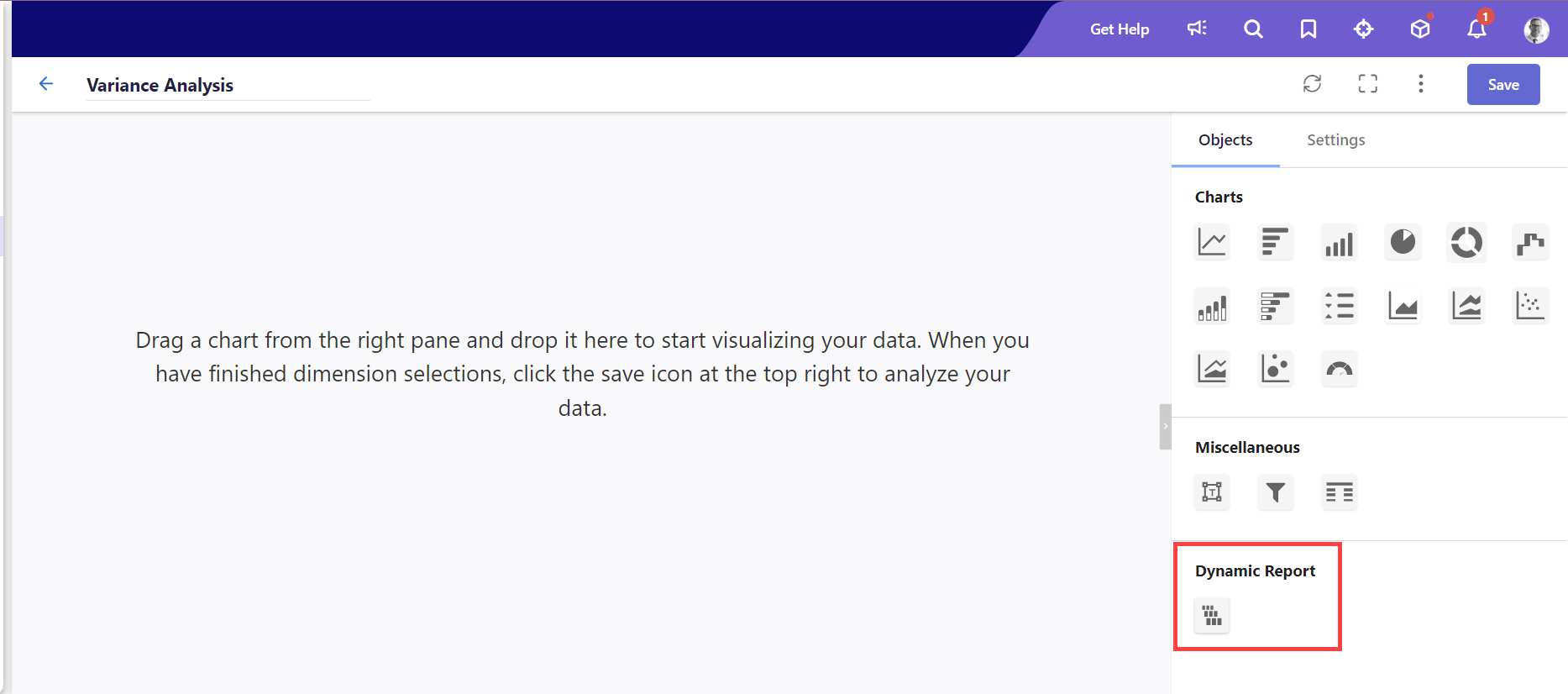
- Drag the dynamic report chart onto the dashboard. The Dynamic Reports pop-up appears.
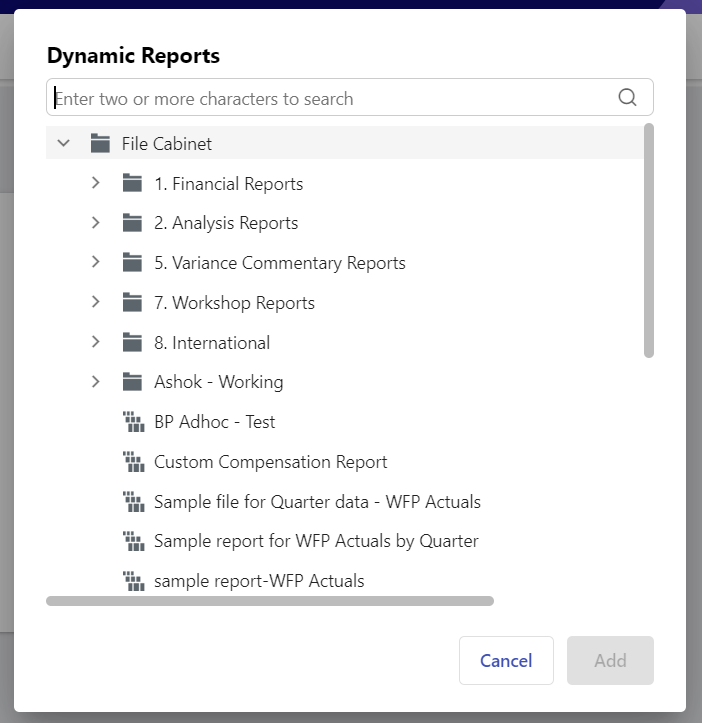
- Search and select the desired dynamic report and click Add to add the dynamic report to the dashboard.Note:You can only view and select the Dynamic Report you have access to. If you are sharing this dashboard with another user, they can view the data in this chart only if they also have access to the dynamic report.
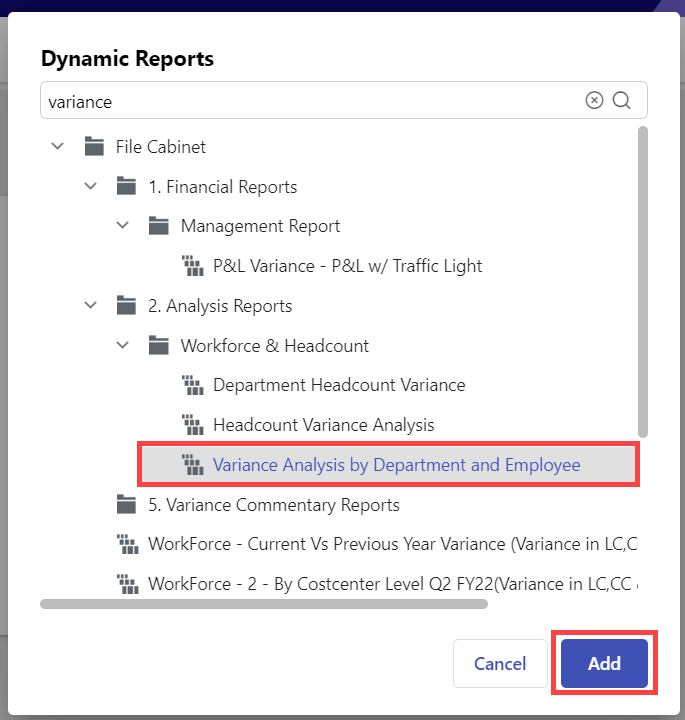
- Modify the filter dimensions and page dimensions if required.Note:
- Any selections you make for page dimensions while setting up or editing the chart will be retained, even when you change the source dynamic report's page dimensions later.
- Modifying the dimension selections of the dynamic report within the dashboard does not impact the original (source) dynamic report.
- Structural changes such as the addition or deletion of a row/column or page dimensions, made to the source dynamic report will reflect in the dynamic report you added to the dashboard, overwriting any changes made within the dashboard.
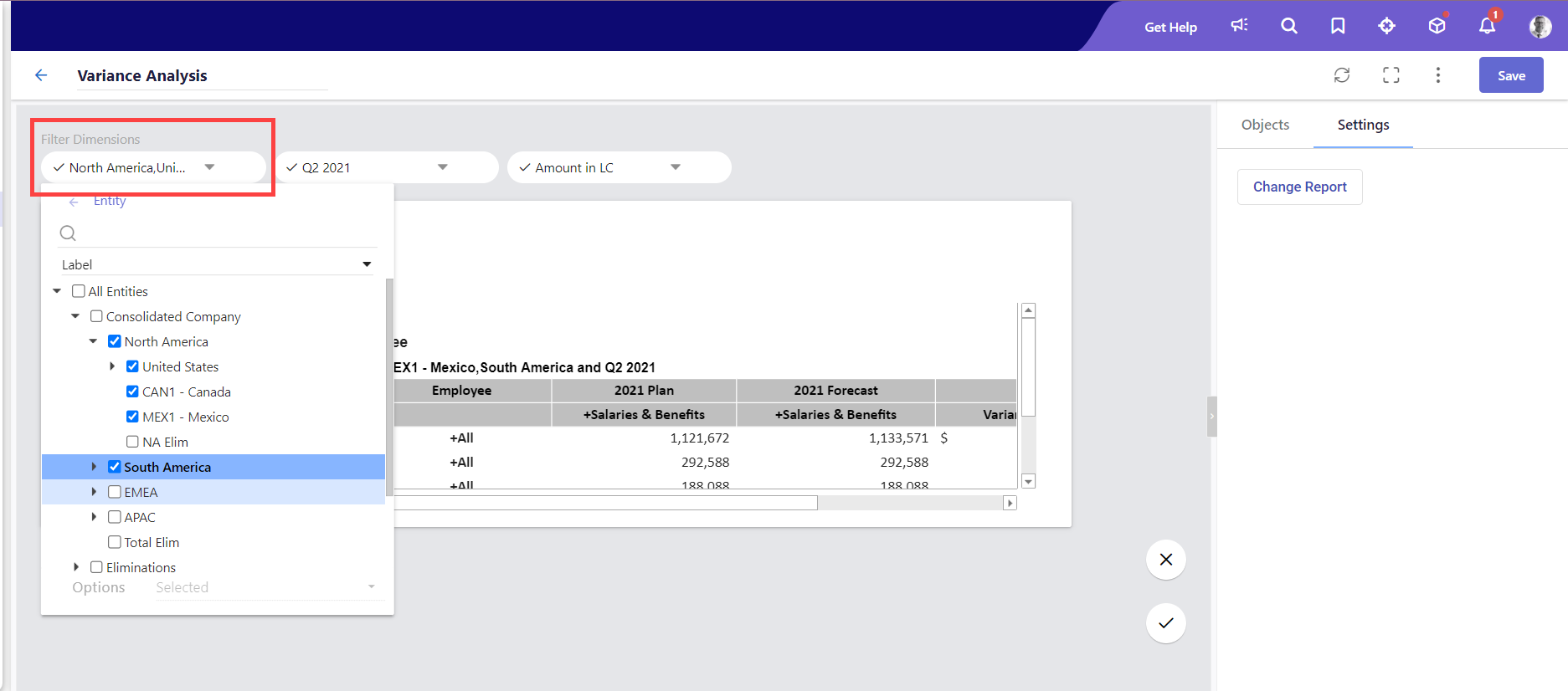
- Optionally, change the name and enter the subtitle of the dynamic report.
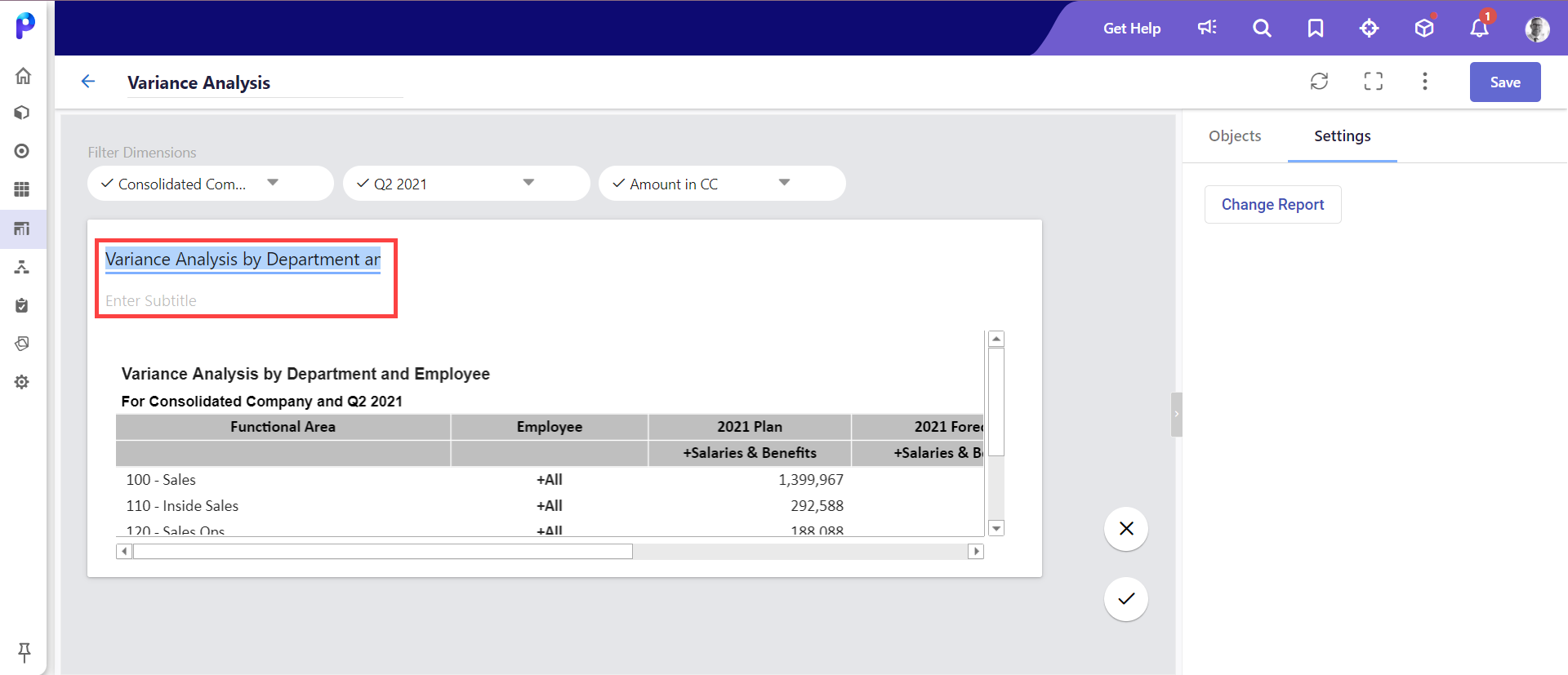
- Click Apply Changes to confirm your changes.
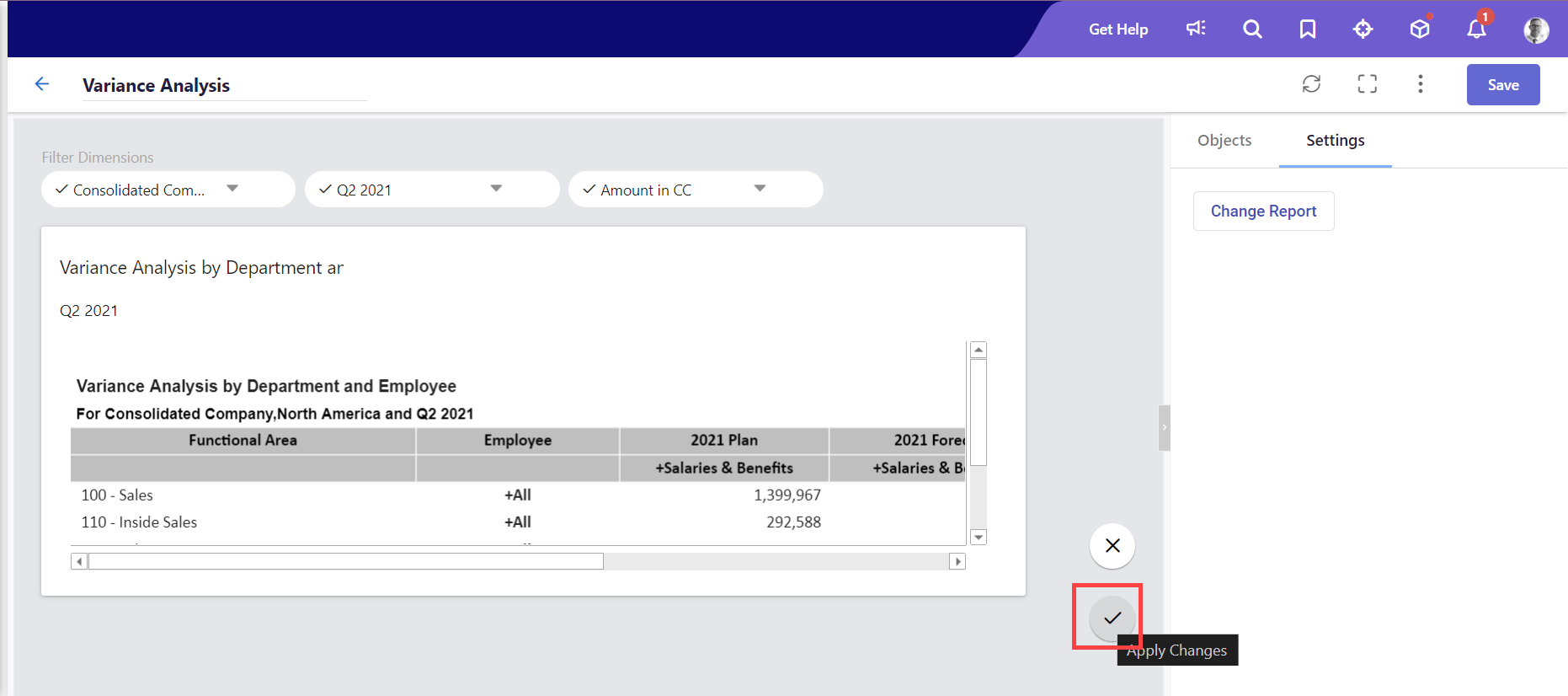 Note:If you wish to change the dynamic report, click Change Report under the Settings section before you click Apply Changes.
Note:If you wish to change the dynamic report, click Change Report under the Settings section before you click Apply Changes.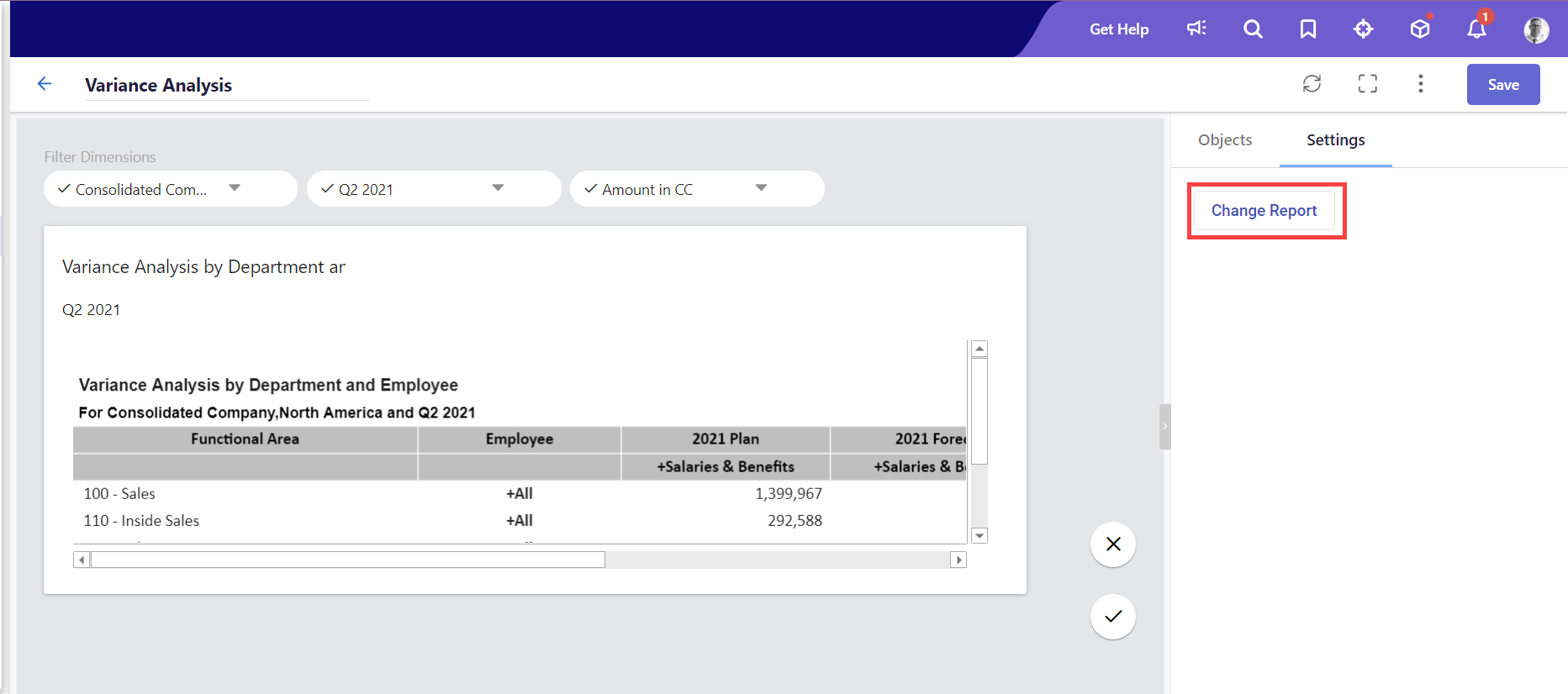
- Resize the dashboard if required.
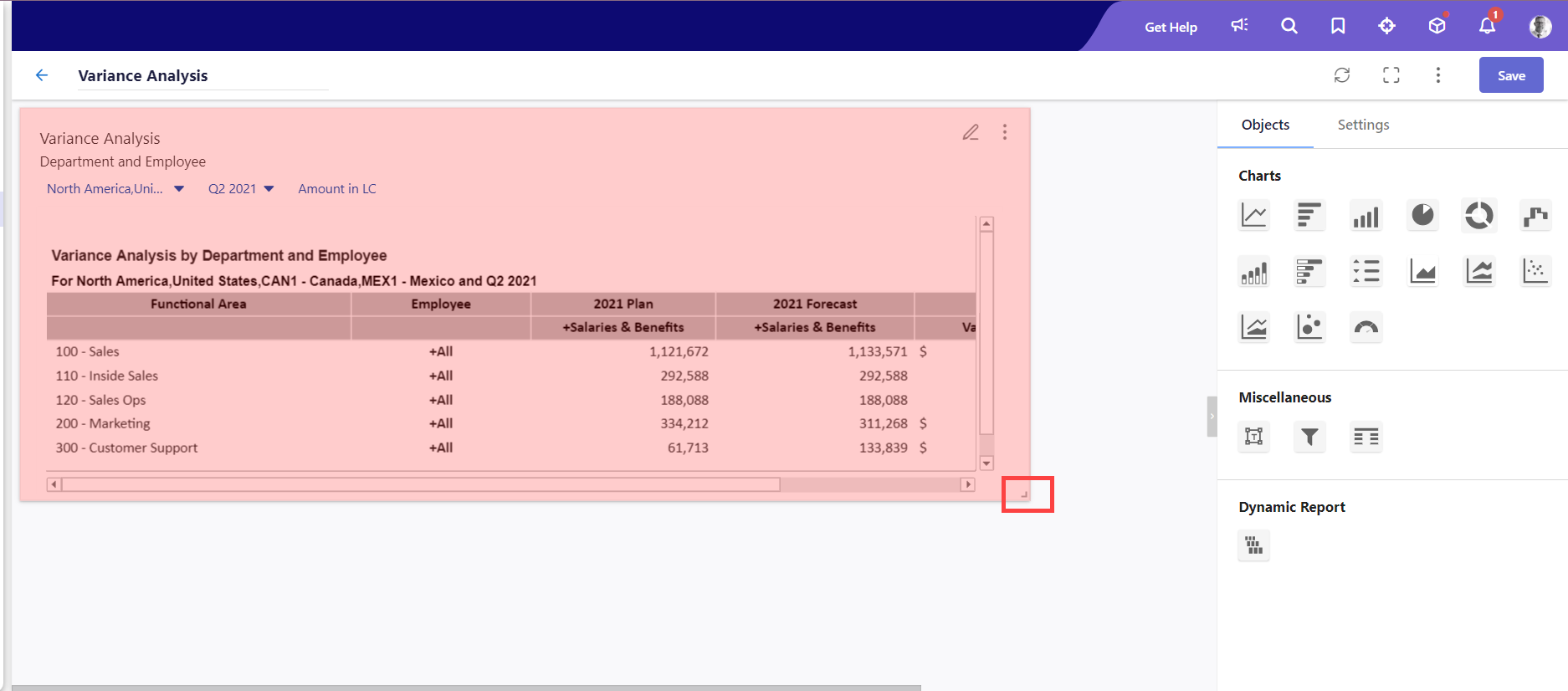
- Change the name of your dashboard and click Save to confirm your changes.
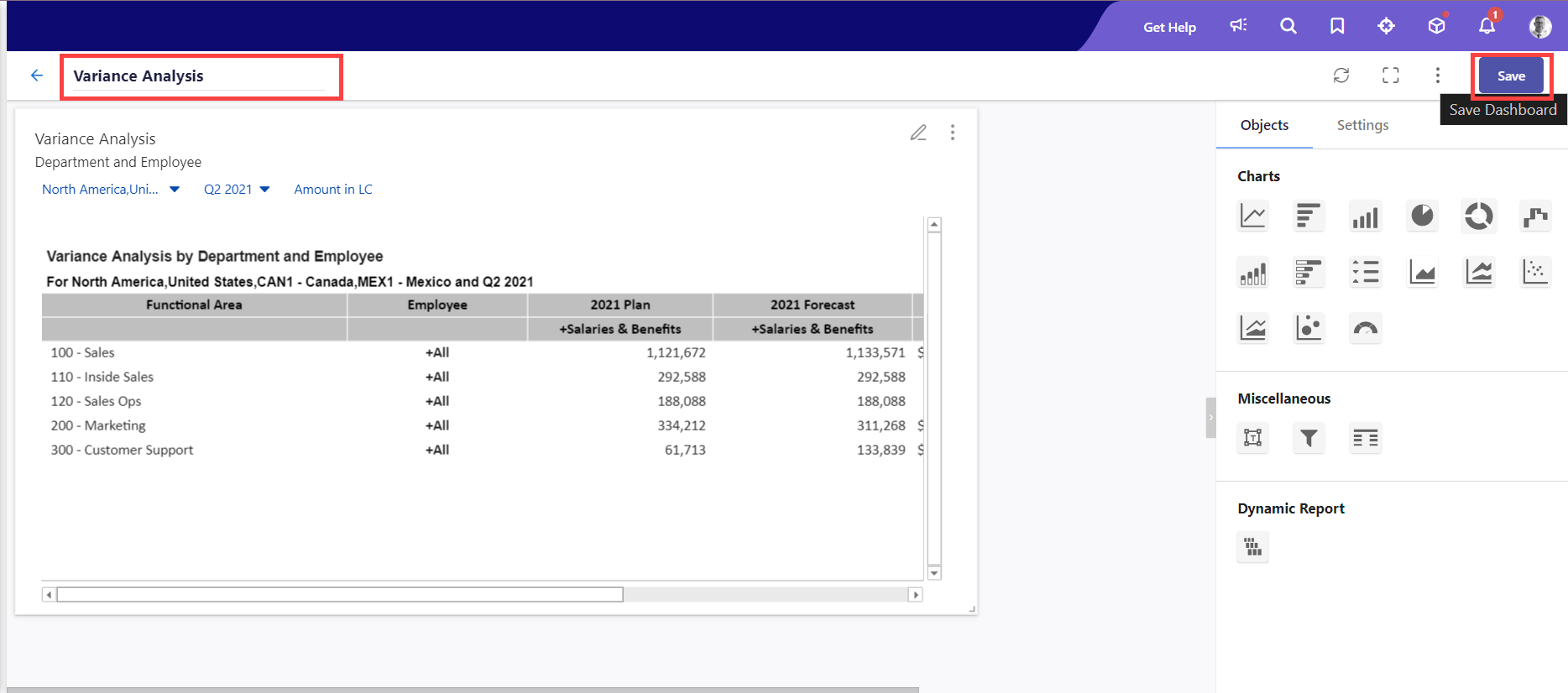
- Click the Share button to share the dashboard with others. Learn more about dashboard sharing here. Other actions include modifying filter dimensions, performing drill-throughs, and drill-downs, and exporting the dashboard in PDF or Excel.
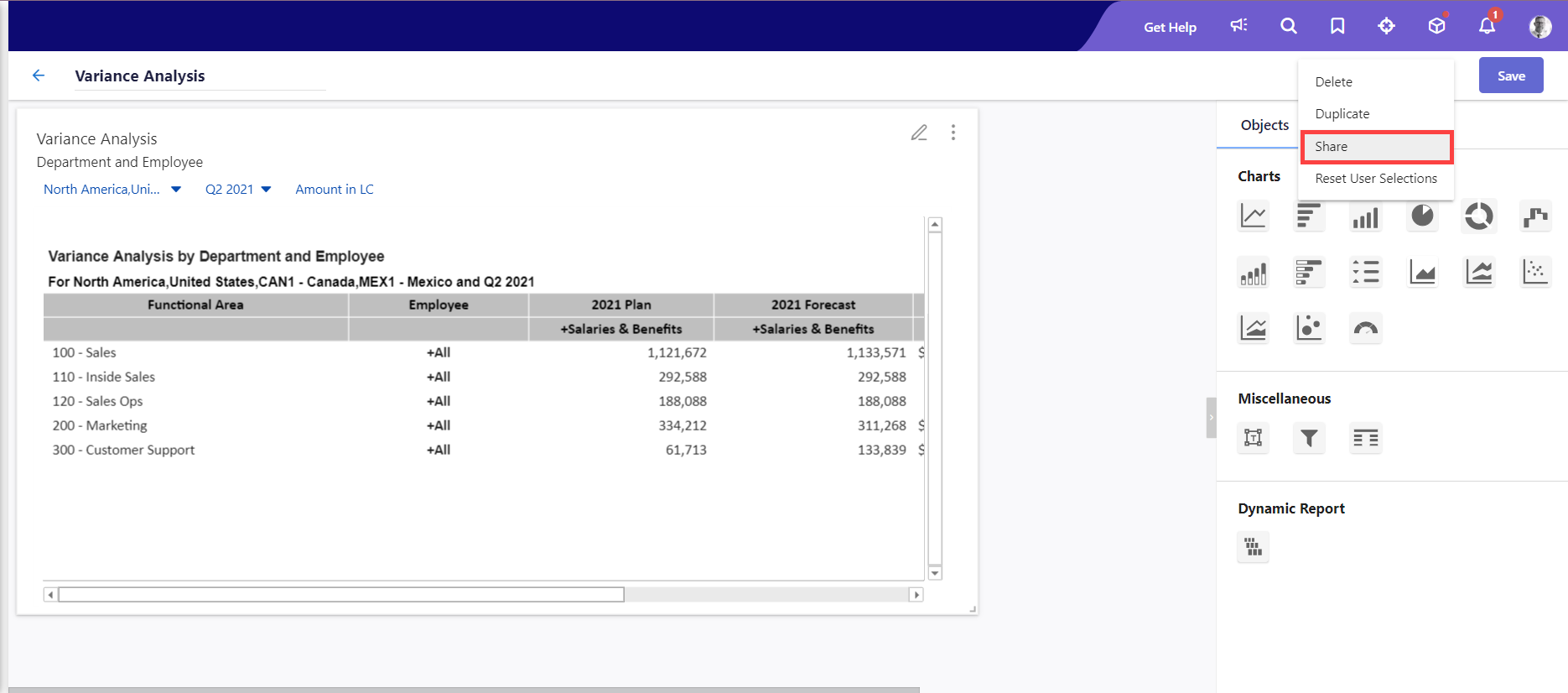
- Dashboard export is not supported for this chart type currently. Blank space is displayed for this chart even if you export.
- Any updates to page dimension selections are retained for the respective chart.
- Substitution variables for this chart cannot be edited at the dashboard level
Let’s understand this with a use case:
Consider a Variance Analysis dashboard designed for the North American region, with the United States, Canada, and Mexico shared with another user in view mode. On accessing this dashboard, the other user can adjust filter dimensions, let's say focusing solely on the Salaries & Benefits for the United States region.
On making these changes, the table chart dynamically reflects the data for Salaries & Benefits for the selected region. By hovering over Salaries & Benefits, a tooltip indicates that they can drill down for more detailed insights.
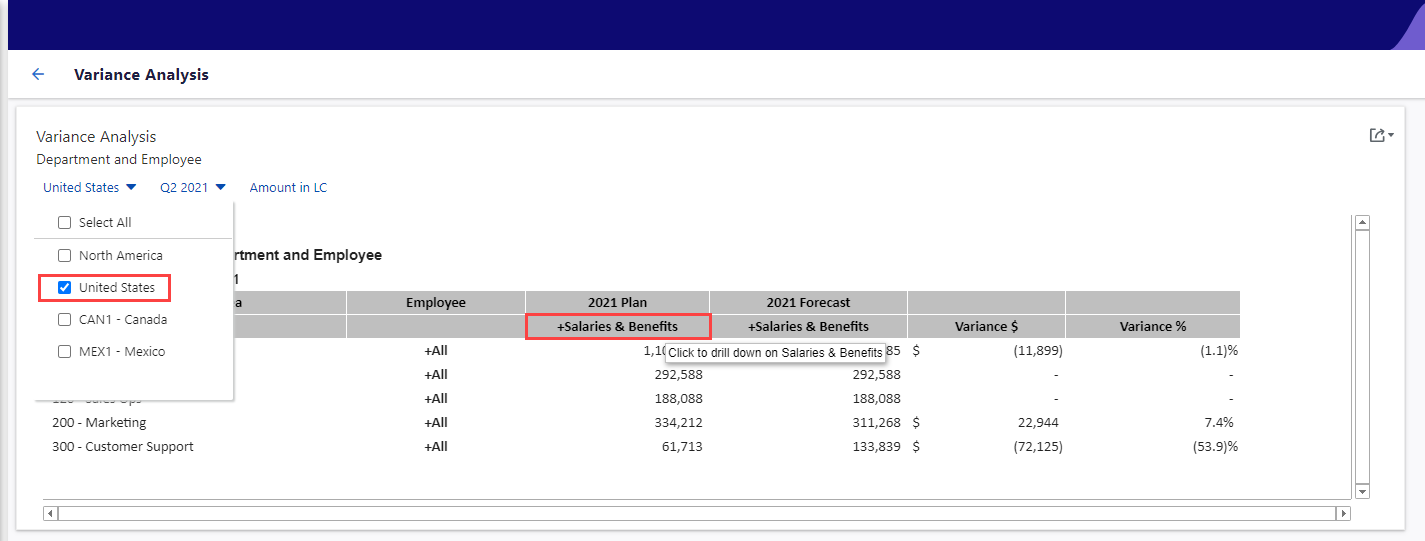
On clicking, they can see the detailed view as shown in the image below.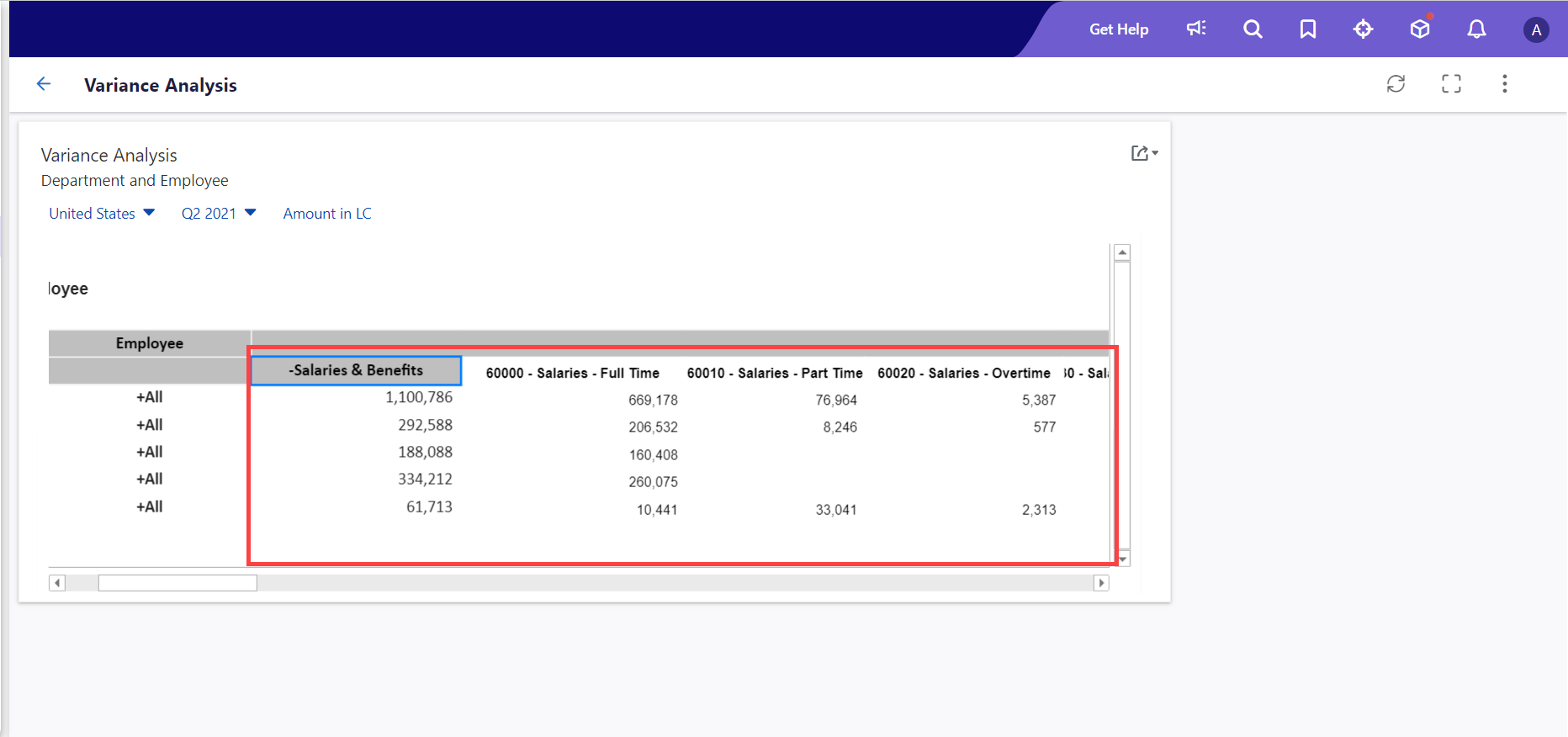
Let's see another use case where you can view predict signals within the report. On the Financial Forecast Report Dashboard, where predict signals are available, right-clicking on any value displays the Predict Signals option.
.png)
Selecting any option, like Signals for All Lines, displays the signals as shown in the below image.
.png)
Structured Planning: Updated Financial Package Report Outputs
With this release, you can now view the updated Financial Package Report Outputs that use the table and shrink-to-fit options in Financial Package.
The Table option is used to insert the dynamic report as an object within the Financial Package report.
.png)
However, if Shrink to Fit is selected, you won't be able to use the Report Display in Output feature. On generating outputs using these options, you can see minor changes in row height and column width compared to the existing output, as well as the possibility of adding a page break in case of large report content.
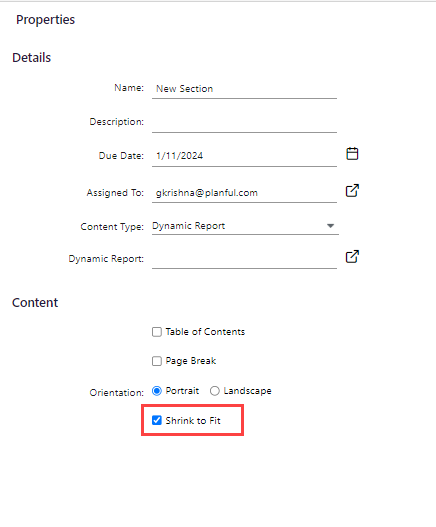
To learn more about Financial Report Packages, click here.
Structure Planning: Reinstall Offline Planning
With this release, we have updated the Planful code certificate in Offline Planning. You must reinstall Offline Planning after this release. Click here to learn more about Offline Planning.
Following the February release, you will see a pop-up to install the update while accessing Offline Planning. Click Install, and you will be all set to use Offline Planning. If you have any questions or concerns, reach out to Planful Support.
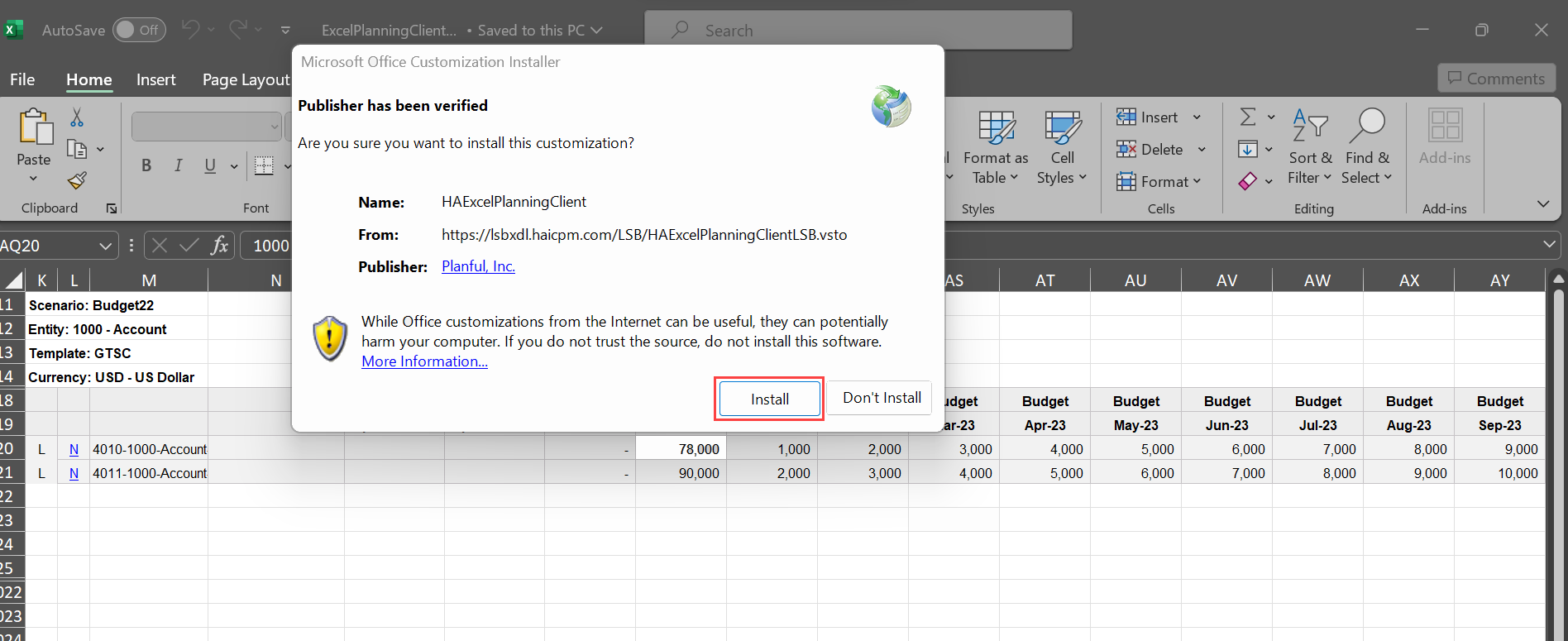
Dynamic Planning: Enhanced Save View Error Reporting
With this release, you can see an enhanced error message if the system identifies invalid members while attempting to save modifications made to an ad-hoc view.
.png)
You can see a list of the identified invalid members directly below the view by clicking OK, providing clarity and transparency. This enhancement streamlines the error reporting process, ensuring users are promptly informed of any issues and can easily identify and address the specific elements causing errors in their ad-hoc view.
.png)
Predict: Introduced Fill All Lines option in Templates
Plan your budget and forecast in a single click with the quick and easy Fill All Lines option in Templates.
.gif)
Read More...
With this release, we have introduced the Fill All Lines option to generate Projections in templates. The Fill All Lines option will generate Projections for all the open periods including the latest actuals to date. This option will be available only when the template size is within the supported range of 100 'L' type lines or less. For larger templates exceeding the limit, you can use the Fill Selected Lines option as before.
